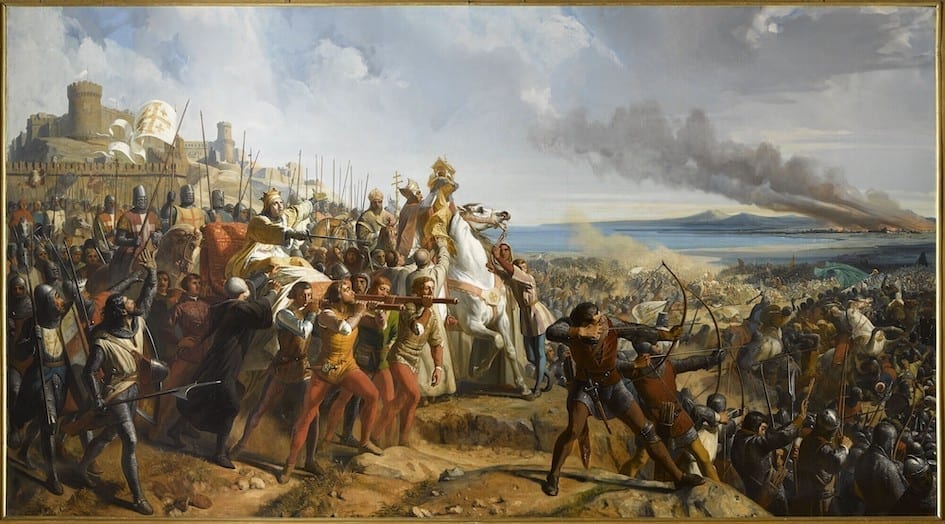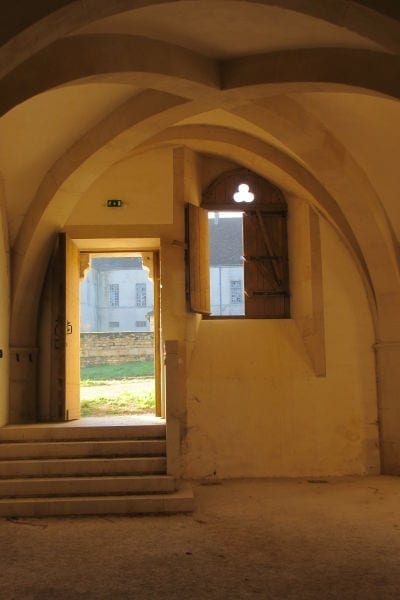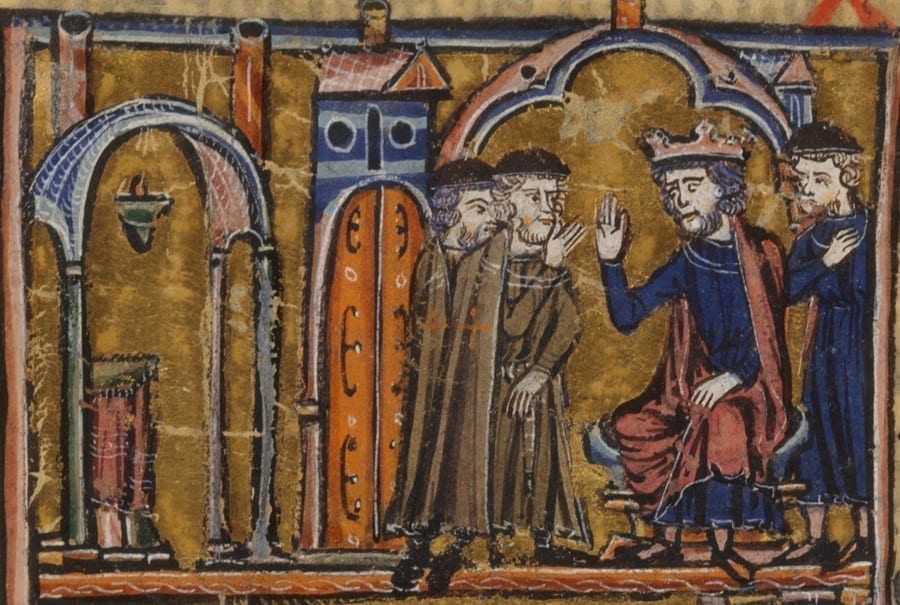Templars: a two hundred years history
Crusades and Knights Templar

The order of the Templars has its roots in the context of the Crusades. For eleventh-century Christians, Jerusalem was the center of the world, the holy city housing the Tomb of Christ and the memory of great moments in his life. Pilgrimages had developed there since the year 1000, but they became increasingly threatened when the recently converted to IslamSeljuk Turks invaded Asia Minor.
From 1049, they dominated Iran, Iraq, Syria and Armenia. In 1071, they crushed the Byzantine army. Then, the road to Jerusalem was out of the Christian control of Byzantium. In 1095, at the Council of Clermont, Pope Urban II, a Champenois, appealed to the knights of the West to liberate Jerusalem. They enlisted en masse under the orders of different leaders, including Godefroy de Bouillon.
The crusaders conquer Antioch in 1098 and Jerusalem in 1099 then Caesarea in 1101, Acre in 1104, Tripoli in 1108 … While the vast majority of the knights have returned to their strongholds in the West, pilgrims continue to flock but, on approach from Jerusalem, their security remains threatened.
Protecting pilgrims and maintaining a permanent army
Initially the Templars were a small troop called the “Poor Soldiers of Jesus Christ” living religiously and in destitution, providing a road police, escorting pilgrims as they approach Jerusalem, especially in the narrow defiles between Caesarea and Haifa, or to emblematic places of the life of Jesus, such as the Jordan Lake.
At the request of the king of Jerusalem Baudouin II, after the council of Troyes, they constituted a permanent army in the Latin Kingdoms of the Middle-East, alongside the Hospitalars of Saint John of Jerusalem and the Teutonics Knights, the other two main religious and military orders. On the front line, in their fortresses, but also in the Iberian Peninsula, the Templars divide their lives between prayer and war, in silence and austerity, courage and discipline.

At the rear, within the commanderies which progressively mesh France but also England, Scotland, Ireland, Italy, Croatia, Germany, Hungaria, Spain and Portugal, the Templars work to develop their agricultural domains, and in the urban commanderies, their commercial activities. The profits were redeployed to finance the Eastern campaigns and to supply their brothers with horses, weapons, cereals, dried meat, etc.
The Templars were divided into three groups: the knights, the serving brothers (or sergeants) and the chaplains who are the only Templars to be priests. They were all recognizable by the red cross sewn on their coats. That of the knights was white, that of the serving brothers, black or brown.
From its beginnings, the order of the Templars knew a strong expansion due to the vocations which it arouses and the numerous donations which were granted to it.
After the loss of Saint-Jean d’Acre, the last possession of the Latins in the Middle-East, the Templars established their headquarters in Cyprus to, from there, try to resettle in Palestine. But the initiatives of Jacques de Molay failed, particularly on the Rouad islet in 1302.
Agony and Fall

As part of his conflict with the papacy since Boniface VIII, the king of France, in search of absolutism, dreaming of being pope in his kingdom, orchestrated a campaign of slanders against the Templars, whose Order remained very powerful, depending exclusively on the sovereign pontiff. Then, with the complicity of the Inquisition although Clement V was not informed, he organized a gigantic police operation which resulted on Friday, October 13, 1307 in the arrest of all the Templars of the kingdom and the confiscation of their property.
Flabbergasted, imprisoned, brutalized, threatened or even really tortured, a large majority of the Templars questioned in Paris, and in particular all the dignitaries, made the confessions that the inquisitors await. They were accused of forcing new recruits to spit on the cross, forcing them to “obscene” kisses, inciting them to homosexuality and worshiping an idol, the Baphomet. The wave of arrests spread to all kingdoms in Europe, but was only followed by confessions where torture was used.
When, in France, in spring 1310, they regroup and denounce the conditions of their interrogations and their detention to retract their confessions and loudly proclaim the innocence of the order of the Temple, 54 brothers were, as an example , sentenced to the pyre for having confessed and burned the next day May 12, 1310 in Paris. The Templars then give up all resistance.
The order of the Temple was not condemned, but suppressed on March 22, 1312 at the Council of Vienne (Isère), by Clement V, who attributed all the possessions of the Templars to the order of the Hospitalars of Saint John of Jerusalem. There were two exceptions. In the kingdom of Valencia, the new order of Montesa recovered the property of both the Templars and the Hospitallers and in Portugal where King Denis I (1279-1325) obtained from the Pope in 1319 that the Order of the Temple, with men and possessions, become the order of Christ which he had created and placed under his protection.
In 1314, the great master Jacques de Molay and the commander of Normandy Geoffroy de Charnay were burnt in Paris, claiming the innocence of the order of the Temple.
Chronology of the Order

1092
Counts Raymond and Henry of Burgundy arrive at the court of the King of Leon and Castile, Afonso VI, in the context of the Hispanic Crusades called the Reconquista (Christian Reconquest). Henry will become Count of the County Portucalense and will be the father of the first Portuguese king.
1099 (July 15)
Siege of Jerusalem by the Crusaders. Foundation of the crusader states in the Middle East.
1115

Bernard founded the Abbey of Clairvaux.

1118 (April 14)
Gualdim Pais was born in Amares, near Braga. He is the nephew of the archbishop of Braga.
1119-1120
Hugues de Payns and Godefroy de Saint-Omer created the “militia of the Poor Knights of Christ”.
1120 (January 23 )
Council of Nablus. Foundation of the Order of the Temple. Hugues de Payns, elected master by the other knights, received from King Baldwin II his residence near the “Temple of Solomon” as a headquarters or headquarters.

1124
In response to a request for support (not confirmed) from Countess Queen Teresa of Portugal, or on their own initiative to try to find new support in the West, the first Knights Templar arrived in County Portucalense, the cradle of Portugal. Guilherme Ricardo, a Frankish Templar Knight Templar, leads the first group of Knights Templar. He can be considered the first Templar Procurator of Portugal.

1124 or 1125
First Portuguese donation (portucalense) to the Knights Templar (in fact, the first donation in the West to the Knights Templar since the donation of Barbonne by the Count of Champagne was not made until October 30, 1127): a church and a house in the village of Fonte Arcada, south of the city of the Archbishop of Braga.
1125
The Count of Champagne Hugues I abdicated and joined the Knights Templar in Jerusalem.

1126
The Knights Templar receive 17 properties in Portugal. Count-Prince Afonso Henriques considers himself a Brother.
1127-1129
Return of Hugues de Payns to the West. Mention of Templar domains in Payns and Barbonne.
Writing of the eulogy of the new knighthood De laude novae militiae of Bernard de Clairvaux.

1128
Donation to the Order of the Temple of four emblematic castles in central Portugal, near Coimbra, a city that already functioned at the time as the capital of Portugal (a kingdom not yet recognized by the Pope nor by King Leo, Afonso VII, cousin of Afonso Henriques): castles of Ega, Redinha, Soure and Pombal. The important castle of Soure (with a foundation charter dated 1111 by Count Henry) is the object of two donations by the mother of Afonso Henriques (1st King of Portugal), Countess Queen Teresa, to the Order of the Temple (the first on March 19, 1128, the second on the 29th of the same month, a very solemn donation occurring almost a year before the Council of Troyes). Count-Prince Afonso Henriques takes power in Portucalense County. At the age of 10, Gualdim Pais begins his education at court, with Afonso Henriques, nine years his senior.
1129 (January 13)
Council of Troyes. Approval and drafting of the Rule of the Temple. Foundation of the Commandery of Troyes.


1130
Installation of the Order of the Temple in Catalonia.

1130 (March 14th)
Confirmation of the donation of the Château de Soure, previously made by the Infant-Count D. Afonso Henriques and the Queen Countess D. Teresa, to the order of the Temple. This castle, together with those of Ega, Redinha and Pombal formed the defensive line from Coimbra, the future capital of Portugal, to the city of Leiria, where a castle would soon be built.

1131
Installation of the Order of the Temple in Aragon. Coimbra became the capital of Portugal by official decision of King Afonso Henriques.
1130-1140
The first italian commanderies were established in Rome, Milan and many other cities.
1135 (may)
Council of Pisa. Pope Innocent II presented the new order to the assembly and gave the Knights Templar a list of feasts and fasts to observe.

1135
Construction of the castle of Leiria.

1136
The Order of the Temple officially constitutes a fighting troop in Portugal, supporting King Afonso Henriques.
1136 (May 24)
Death of Hugues de Payns, 1st great master of the Temple.
1139
Papal bull Omne datum optimum. The order of the Temple reported directly to the Pope.

1139 (July 25)
Participation of the Order of the Temple in the battle of Ourique against the Almoravian Emir Yusuf.

1141 (February)
Treaty of concord and peace between the Order of the Temple and the Order of the Hospital, both on the continent and overseas.
1142

First mention of a Templar estate in Avalleur.

1143 (October 5)
Independence of Portugal recognized by the King of Leon and Castile to the Cortes of Zamora.

1147 (March 15)
Conquest of the city of Santarém on the Muslims. King Afonso Henriques gave, as he had promised, all the properties and benefits of the Church, in this city, to the Order of the Temple as a reward for his help, which was immediately challenged by the Bishop of Lisbon who had jurisdiction over the territory and city of Santarém.

1147-1159
Twelve years of negotiations between King Afonso, the Order of the Temple and the Bishop of Lisbon on the problem of the donation of Santarém.

Definitive resolution of the problem with the donation of Santarém to the Templars with the donation of the territory of Ceras (with Thomar as the most important place). This territory belonged to the possessions of the Diocese of Coimbra, at that time with the Bishop’s chair empty. It was the Archbishop of Braga who allowed the King to make this donation. Arrival of the Knights of the Temple in Tomar, where they immediately moved to the old building of the old church/monastery of Santa Maria dos Olivais.

1160
Beginning of the construction of the Templar Castle of Tomar.

1162 (November)
Charter of Royalties (Carta de Foral), which the city and the inhabitants of Tomar had to pay to the Order of the Temple in compensation for a Charter of Autonomy (Foral).







